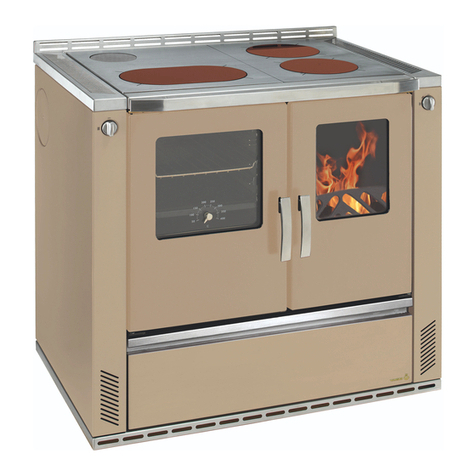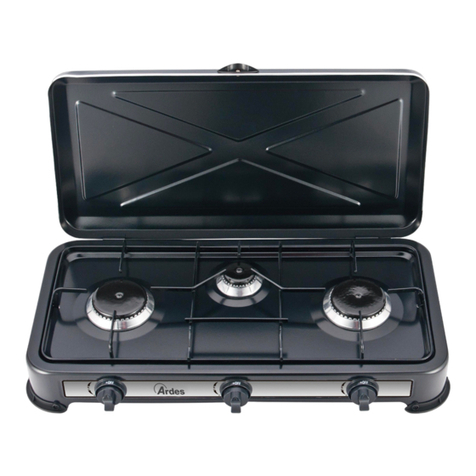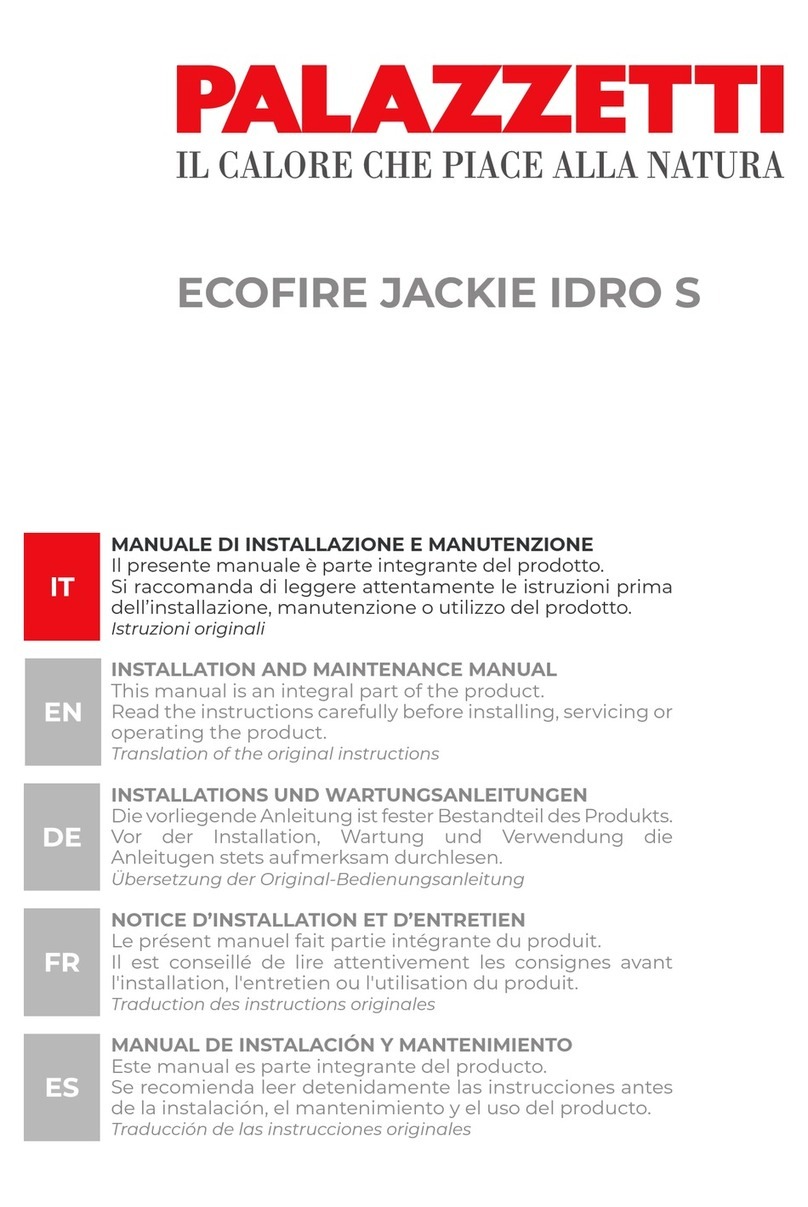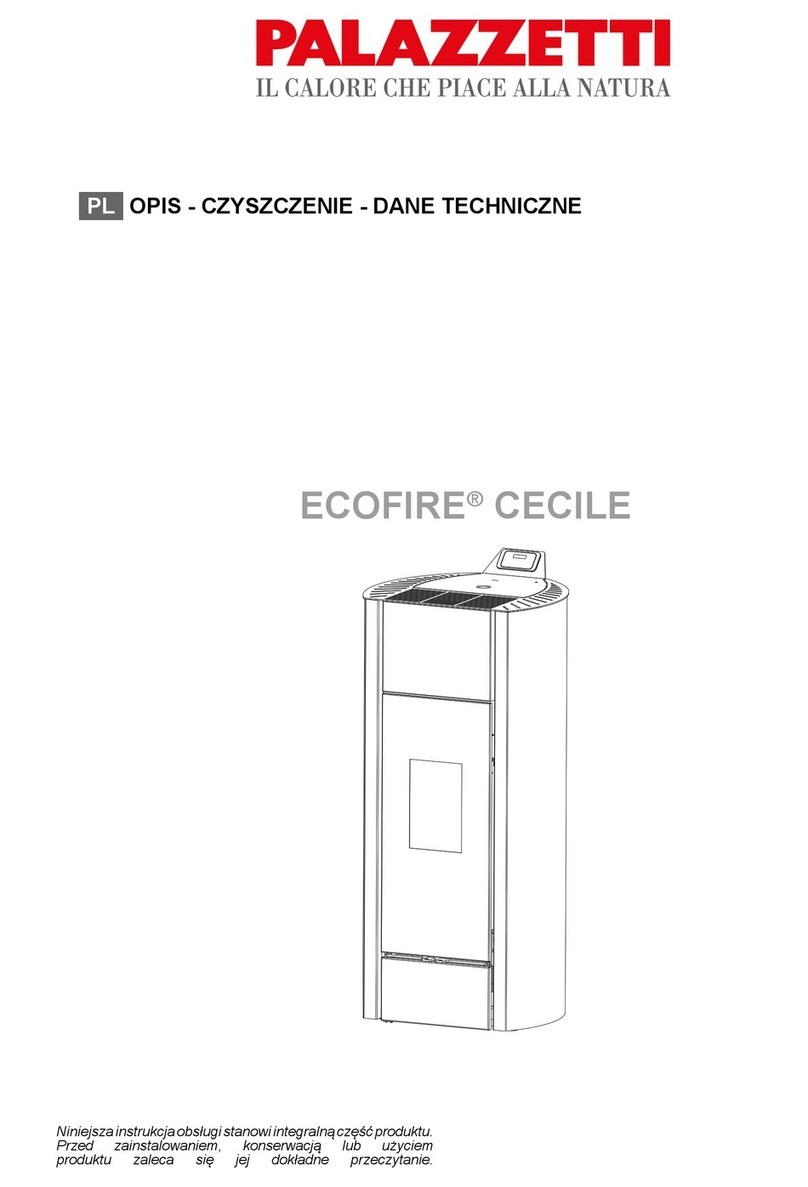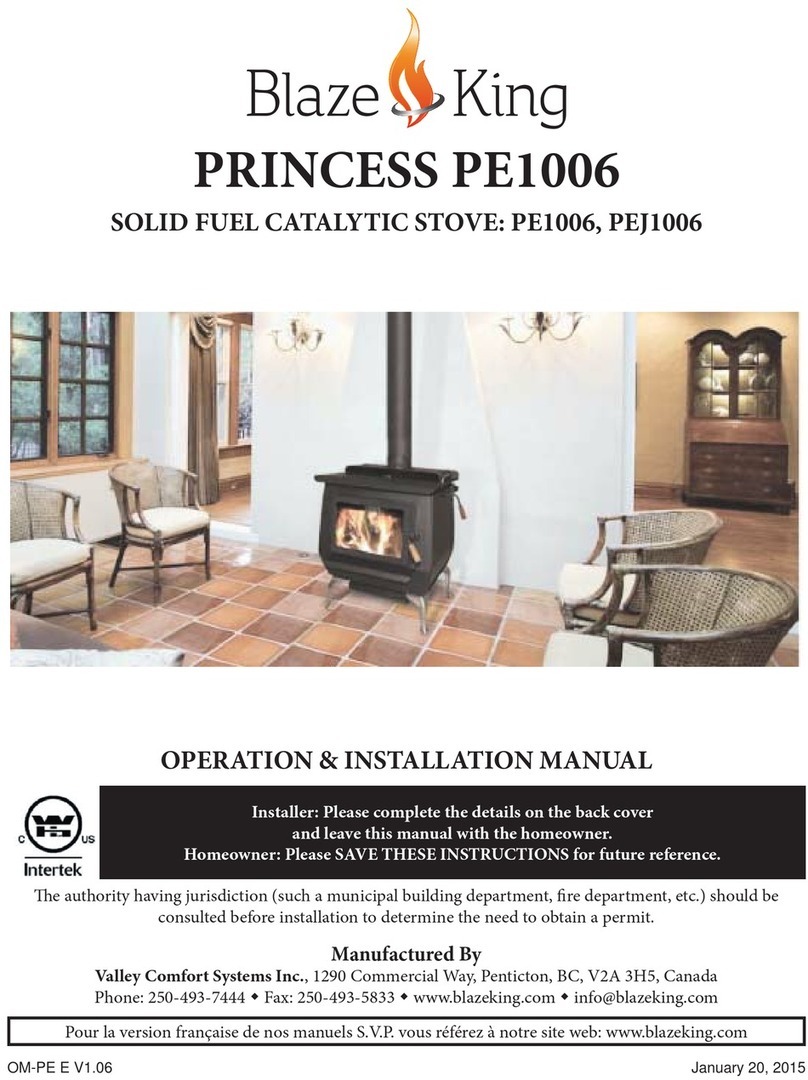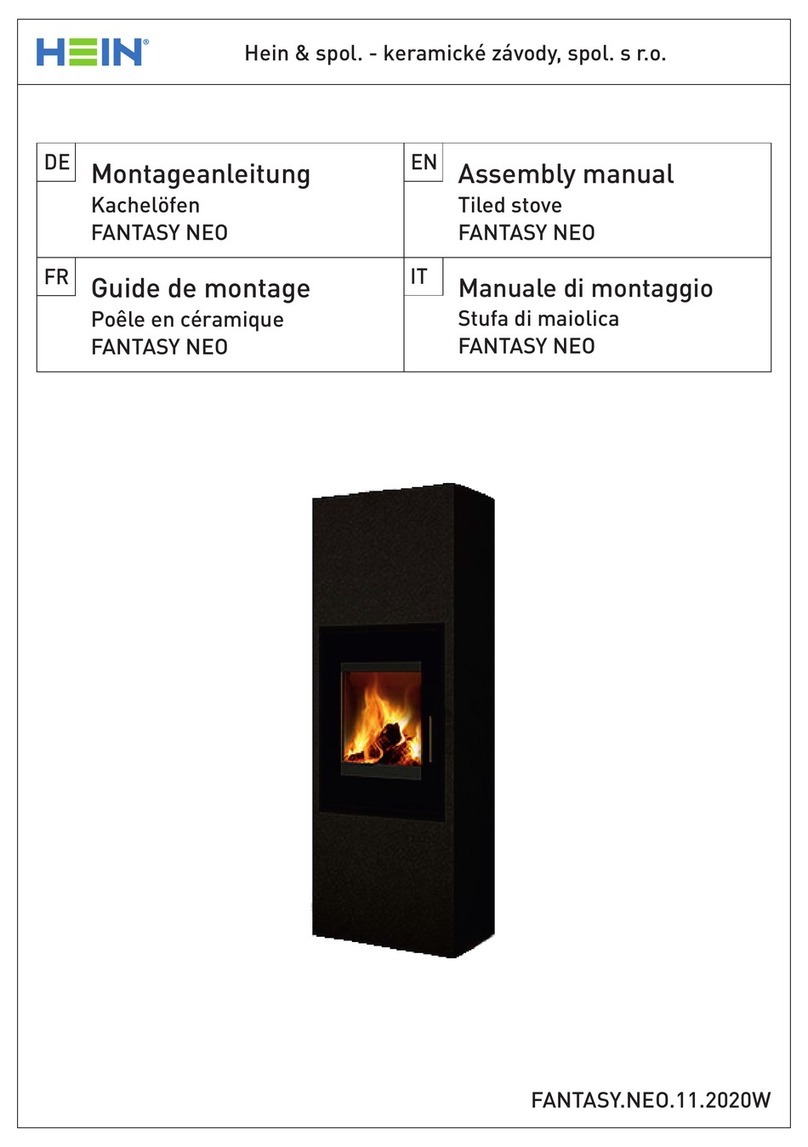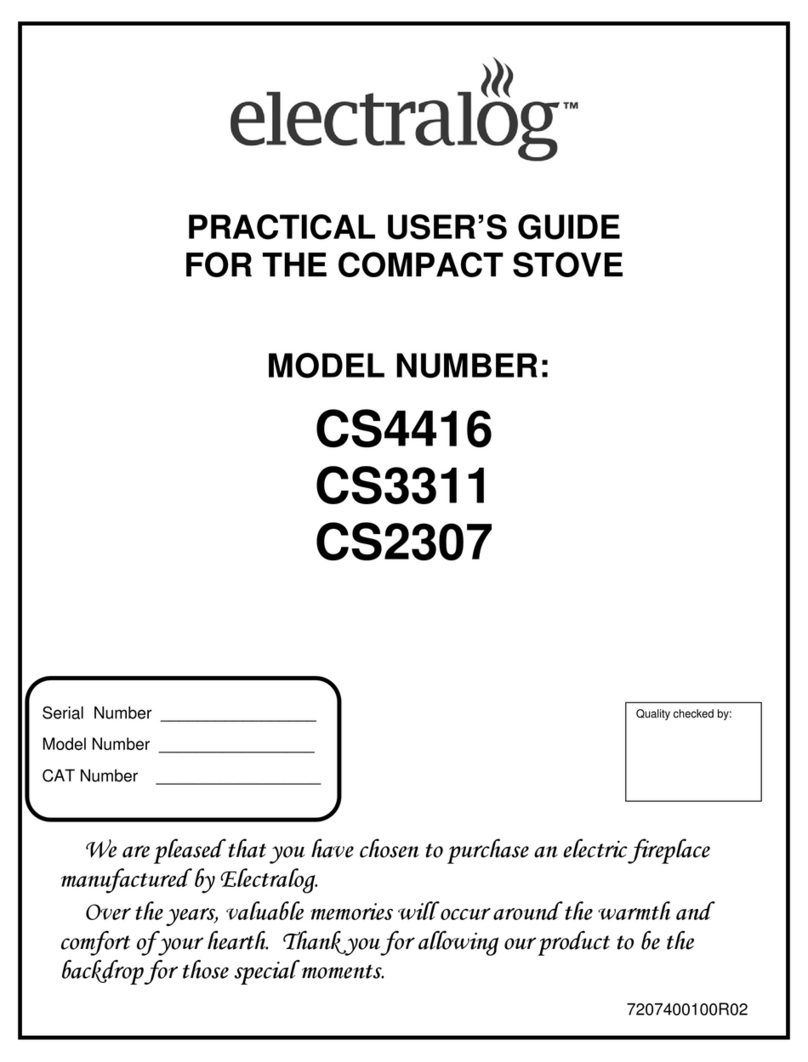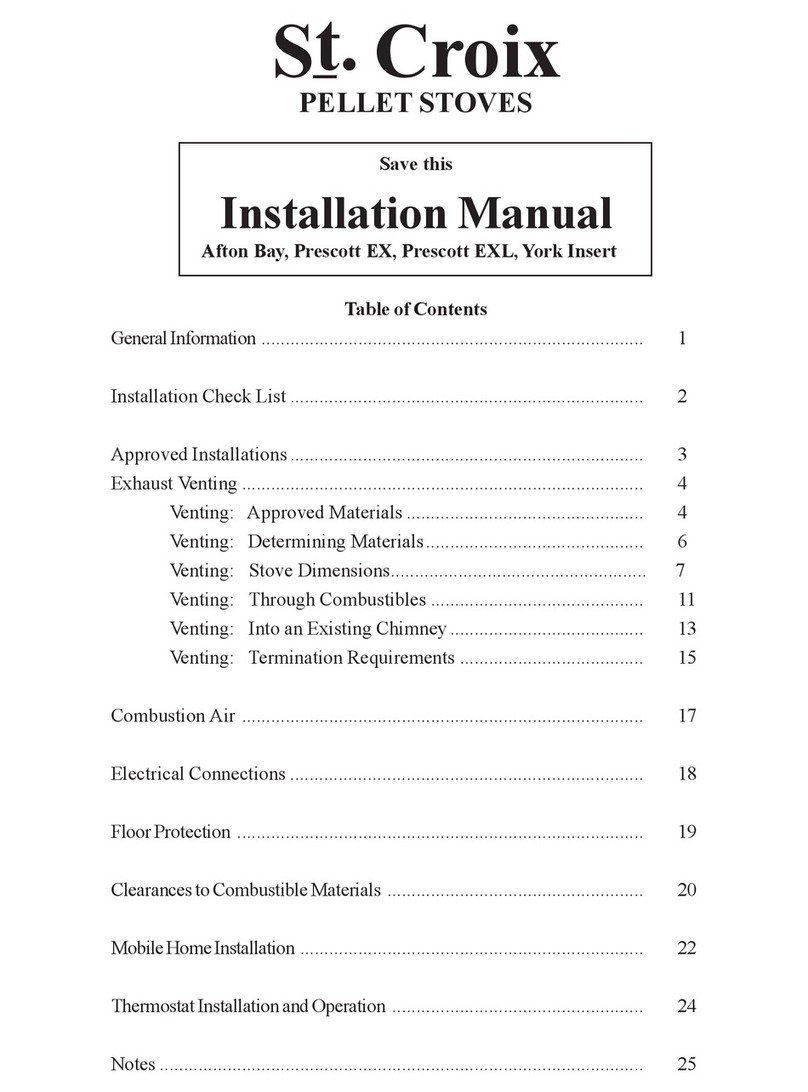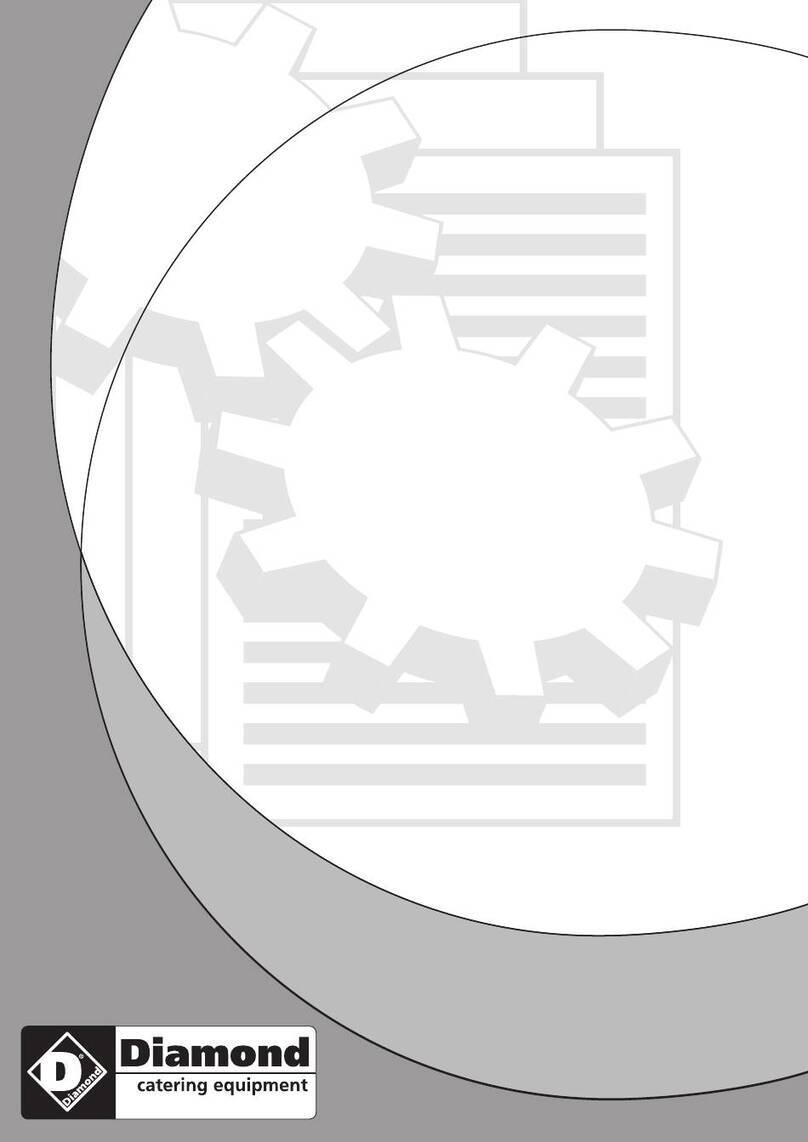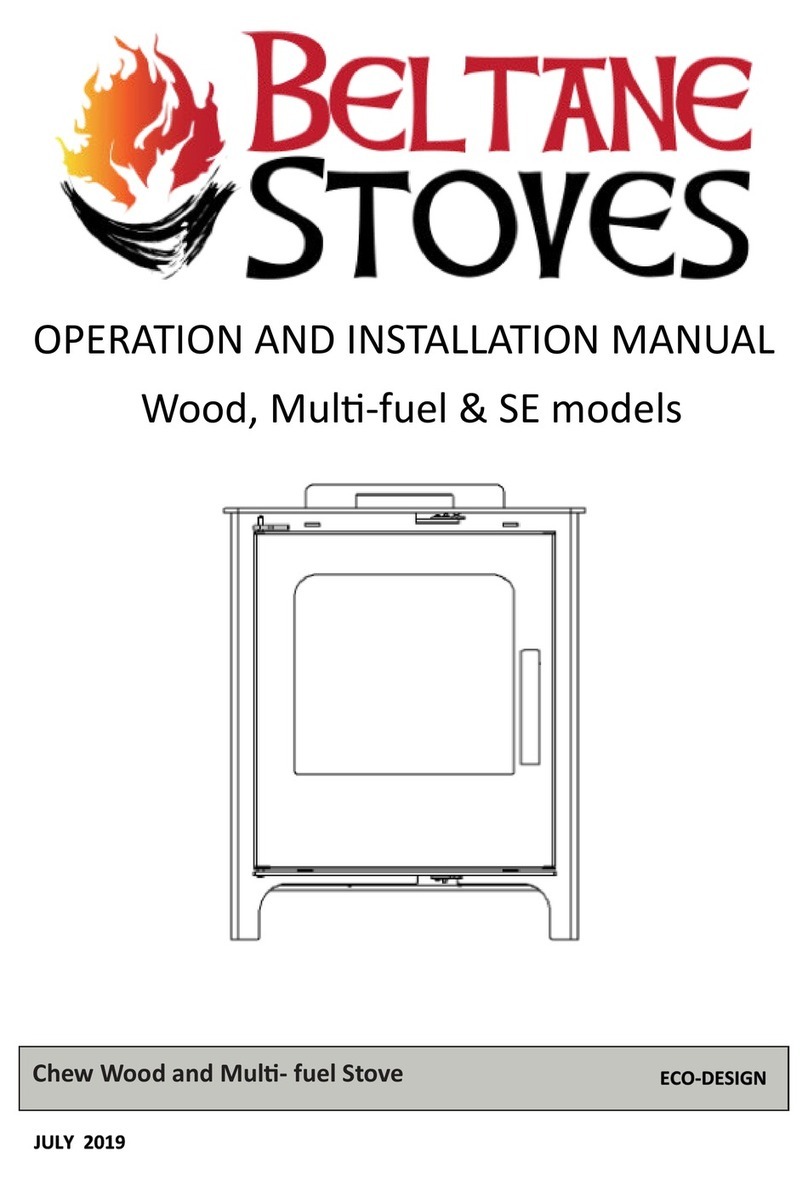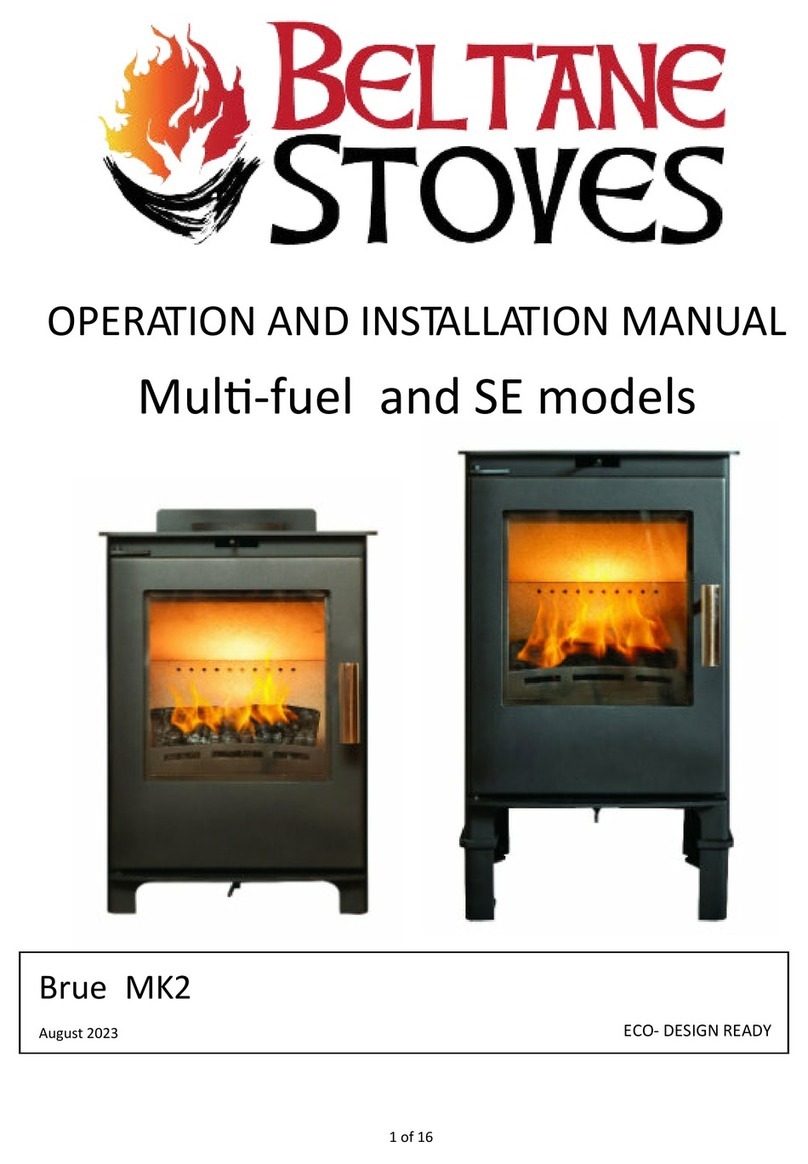
Commissioning Checks & Handover
1. Ensure loose parts are fied in accordance with the instrucons given in this manual, page 4.
2. On compleon of the installaon allow a suitable period of me for any fire cement and mortar to dry
out. A small fire may be lit to check that smoke and fumes are taken from the stove up the chimney and
emied safely into the atmosphere and to e
nsure that the fire responds to the operation of the controls.
3. Do not run at full output for at least 24 hours.
4. On compleon of the installaon and commissioning ensure that the operang instrucons for the stove
are le with the customer.
5. Remind the customer to register the stove warranty online (//mendipstoves.co.uk/SIT/StoveRegistraon).
6. Instruct the customer on the correct use of the appliance
and the summer shut down procedure.
The fuels
likely to be used in the stove and nofy them to use only the recommended fuels for the stove.
7. Advise the user what to do should smoke or fumes be emied from the stove.
8. The customer should be warned to use a fireguard to BS6539 in the presence of children, aged and/or
infirm persons. Also advise that children should not be allowed to operate or refuel the stove at any me.
5
Flue and Chimney connecon to your stove
The outlet from the chimney should be above the roof of the building, see page 6, in accordance with the
provisions of Building Regulaons Approved Document J. If installaon is into an exisng chimney then it must
be sound and have no cracks or other faults which might allow fumes into the house. Older properes,
especially, may have chimney faults or the cross secon may be too large.
Beltane Stoves recommend the use of a solid fuel flue lining system for all installaons into exisng chimneys.
All chimney systems must be used in accordance with Building Regulaons Approved Document J.
If an exisng chimney is used the chimney must be clear of obstrucon and be swept clean immediately before
installaon of the stove. The chimney should be tested to confirm the chimney will provide the correct chimney
pressure for the stove. If the stove is fied in place of an open fire the chimney should be swept one month
aer installaon to clear any soot falls which may have occurred due to the difference in combuson between
the stove and the open fire. If there is no exisng chimney then either a prefabricated block chimney in
accordance with Building Regulaons Approved Document J or a twin walled insulated stainless steel flue to BS
1856-1 maybe used.
Insulated chimneys must be fied in accordance with the manufacturer’s instrucons and Building Regulaons.
A single wall metal flue pipe is suitable for connecng the stove to the chimney but is not suitable for using for
the complete chimney. The connecng flue pipe must have a minimum diameter of 125 mm and its dimension
should be not less than the size of the outlet socket of the stove. Registered smoke exempt models burning
wood only can be installed on a flue of 125mm throughout.
Any bend in the chimney or connecng flue pipe should not exceed 45°. 90 degree bends should not be used
other than within 150 mm of stove rear flue outlet.
A chimney height of not less than 4.5 metres measured vercally from the outlet of the stove to the top of the
chimney should be sasfactory. Alternavely the calculaon procedure given in BS5854:1980 may be used as
the basis for deciding whether a parcular chimney design will provide sufficient draught.
If it is found that there is excessive draught in the chimney then either an adjustable flue damper or alternately
a draught stabiliser should be fied. The adjustable flue damper should not close off the flue enrely but
should in its closed posion leave a minimum connuous opening free area of at least 20 % of the total cross
seconal area of the flue or flue pipe. Adequate provision e.g. easily accessible soot door or doors must be
provided for sweeping the chimney and connecng flue pipe.
Your applianceneeds to bemaintained rounely, thethroat plate/baffle should be cleaned regularly (monthly).
The fluepipe can be cleaned using a flexible brush. Only use a dry cloth on external surfaces. Over me the glass
may become dirty, clean with a damp cloth and polish off with dry cloth. If the stove has not been used for
some me the flue should be checked for blockages before use. Do not modify the appliance; only use spares
authorised by the manufacturer.
















